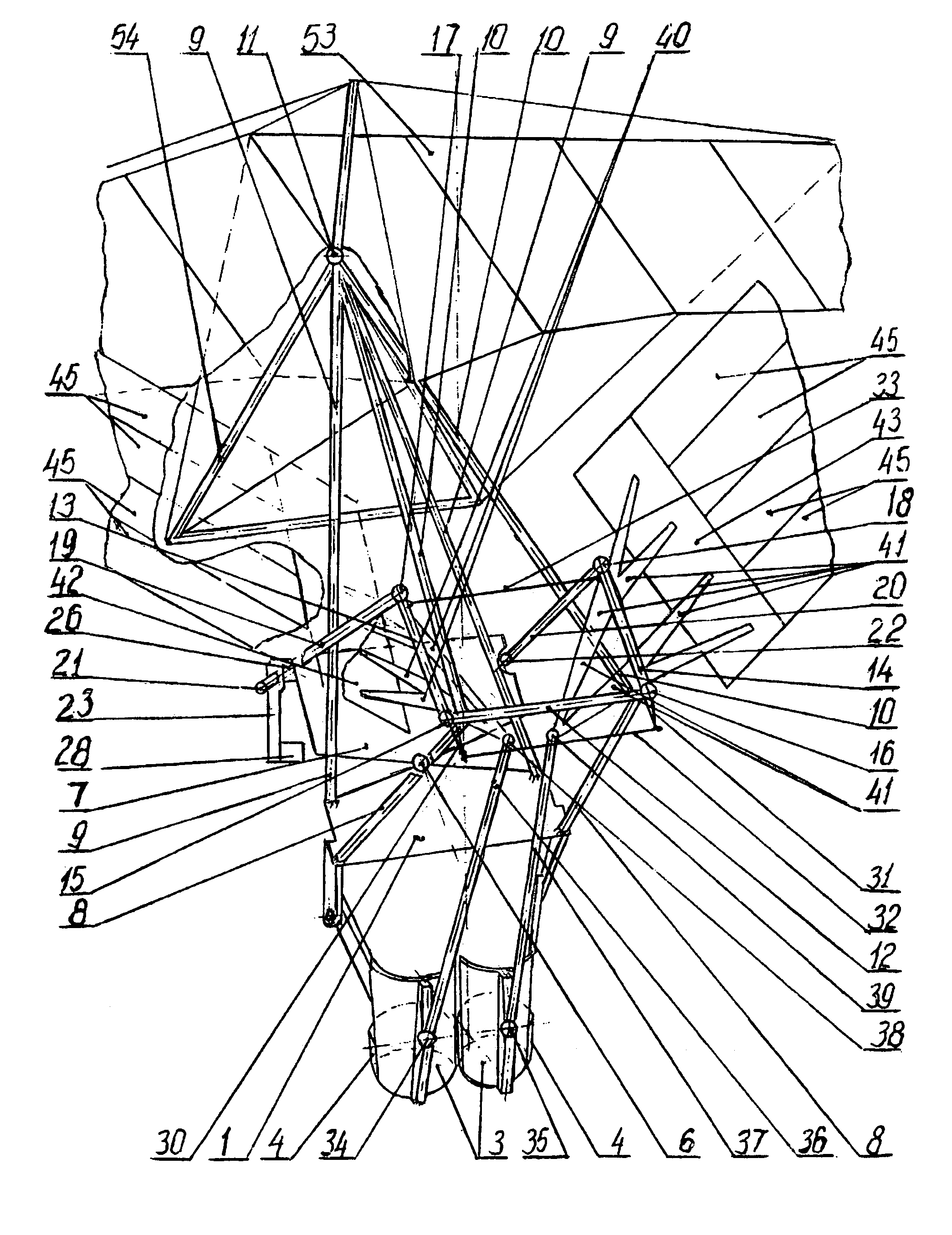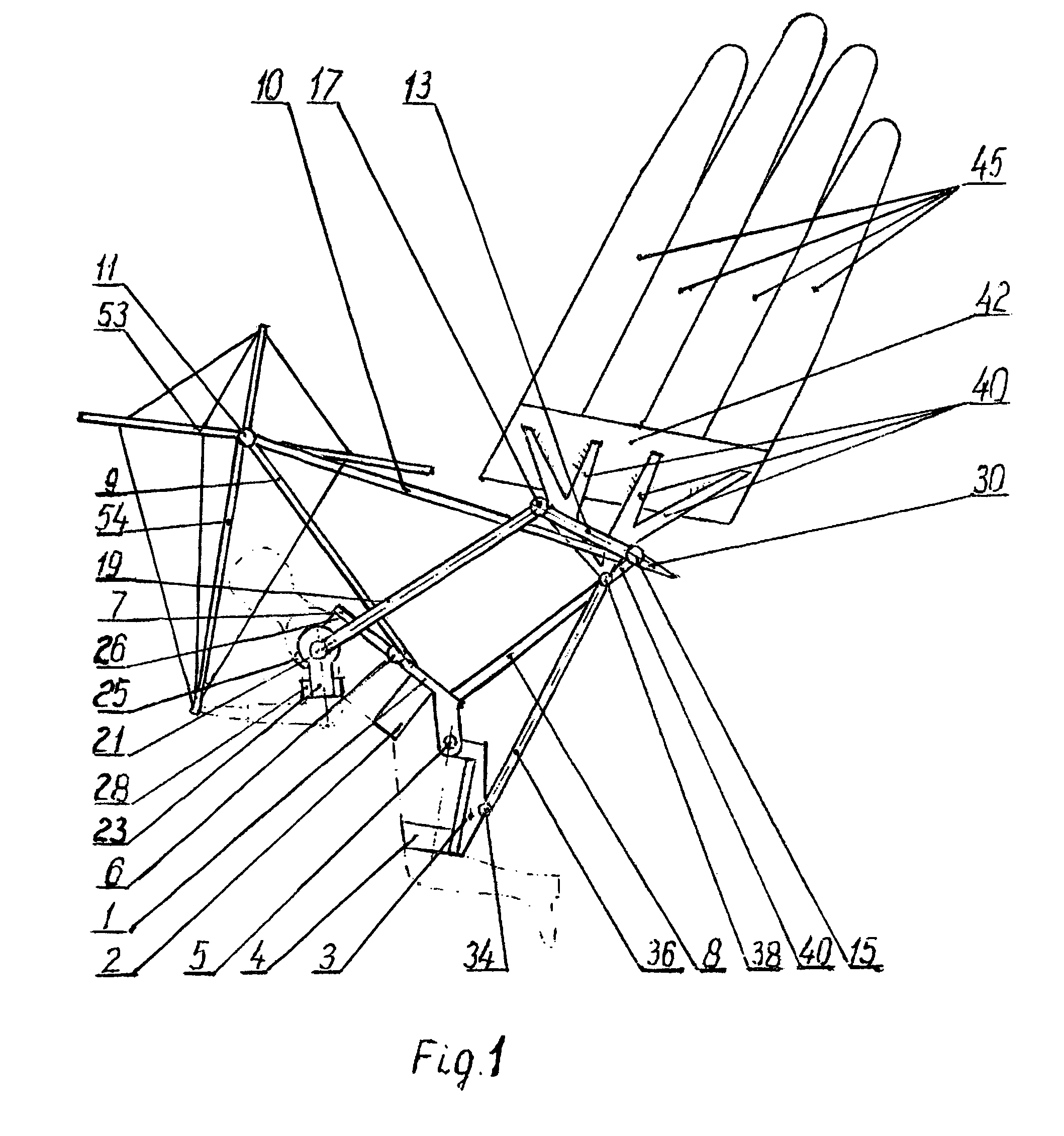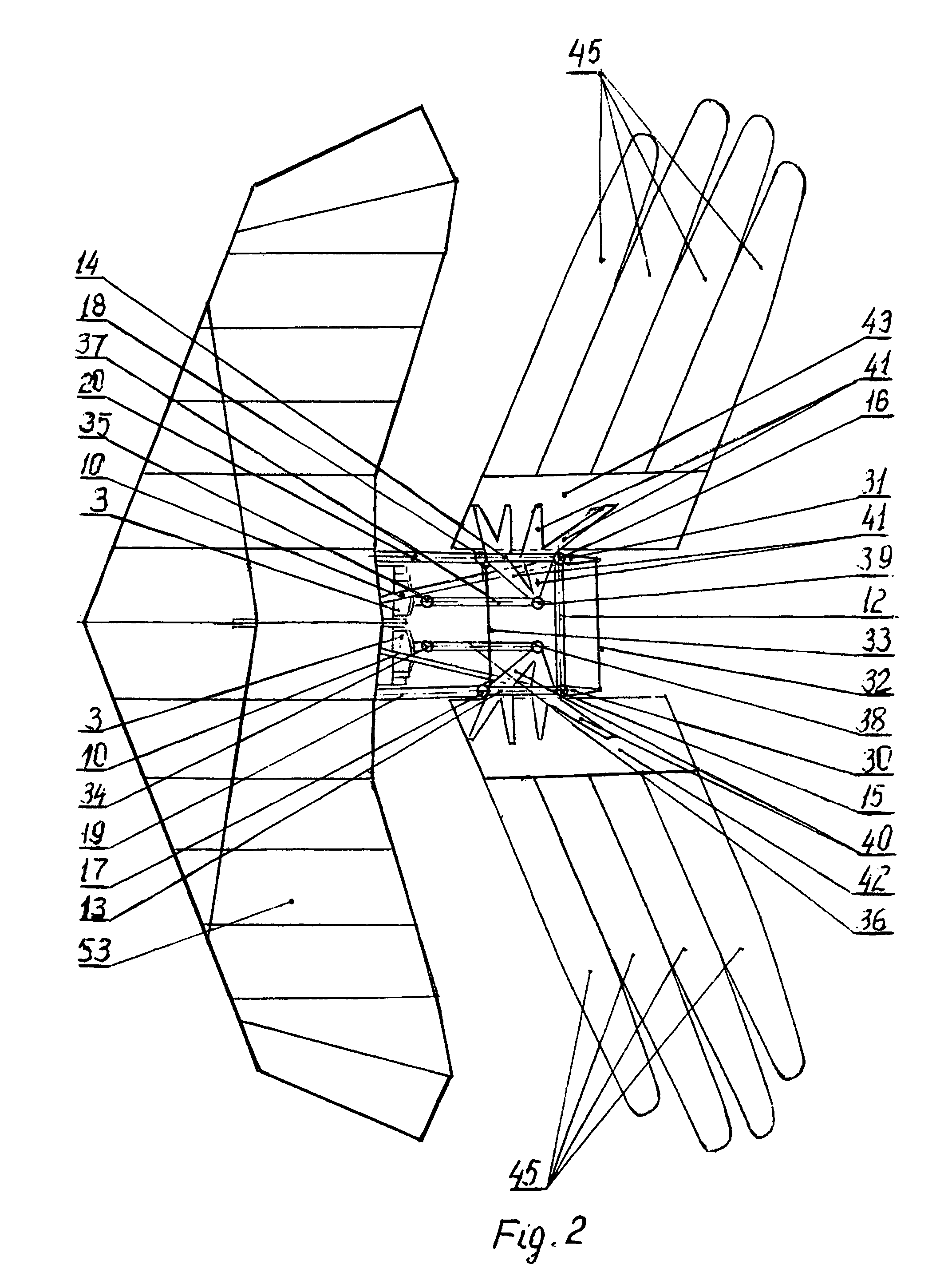Man-powered ornithopter-sailplane
a technology of flying devices and aircraft, applied in the field of man-powered ornithopters, can solve the problems of negative aerodynamic force directed downward, imperfect aerodynamic profile of the flying device, and the apparatus cannot fly at slow speed, and achieve the effect of smooth descen
- Summary
- Abstract
- Description
- Claims
- Application Information
AI Technical Summary
Benefits of technology
Problems solved by technology
Method used
Image
Examples
Embodiment Construction
[0027]A man-powered ornithopter-sailplane according to the first variant with femoral and humeral propulsion engines in accordance with USSR certificate of authorship no. 945 941 and in accordance with international invention publication WO 03 / 035 186 having torso base 1, torso strap 2, two femoral arms 3 with thigh straps 4, two axles 5 joining torso base 1 to femoral arms 3. Torso base I is connected in the front by sliding ball or cardan joint 6 to shoulder base 7 in front of it. To the edges of torso base 1 are attached the frame's left and right framework, which consists of strip pairs 8, 9, 10. The strip pairs 9, 10 converge in the front, are joined together, and are attached to ball or cardan joint 11. Created from strip pairs 8, 10, the frame's posterior corners are connected by strip 12. The left 15 and right 16 ball joints of the left 13 and right 14 wing axles of the flapping wings are rigidly attached respectively to the left and right corners created by strips 8, 10. Wi...
PUM
 Login to View More
Login to View More Abstract
Description
Claims
Application Information
 Login to View More
Login to View More - R&D
- Intellectual Property
- Life Sciences
- Materials
- Tech Scout
- Unparalleled Data Quality
- Higher Quality Content
- 60% Fewer Hallucinations
Browse by: Latest US Patents, China's latest patents, Technical Efficacy Thesaurus, Application Domain, Technology Topic, Popular Technical Reports.
© 2025 PatSnap. All rights reserved.Legal|Privacy policy|Modern Slavery Act Transparency Statement|Sitemap|About US| Contact US: help@patsnap.com



